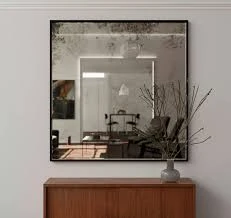

The Allure of Dark Grey Reflective Glass A Modern Design Element
In recent years, architectural design has embraced a fusion of functionality and aesthetics, with materials playing a pivotal role in this evolution. Among these materials, dark grey reflective glass has emerged as a prominent choice, captivating architects, designers, and homeowners alike. This article explores the multifaceted attributes of dark grey reflective glass, examining its practical applications, aesthetic appeal, and environmental benefits.
The Aesthetic Appeal
Dark grey reflective glass offers a unique elegance that transcends traditional building materials. Its sleek finish delivers a modern look, making it a favored option in contemporary architecture. The reflective quality of the glass allows structures to blend harmoniously with their surroundings, creating a dynamic interplay between the building and nature. During the day, it mirrors the environment, reflecting trees, sky, and urban landscapes, while at night, it possesses a captivating allure, especially when illuminated from within. This transformative quality not only elevates the design of a space but also contributes to a building's identity.
The color palette of dark grey exudes sophistication and depth. Unlike the starkness of black or the sterility of pure glass, dark grey offers a gentler yet assertive presence. It can complement other materials such as wood, stone, and metal, facilitating a cohesive design that feels both modern and warm. This versatility allows architects and designers to create vibrant spaces that resonate with both elegance and comfort.
Practical Applications
Beyond its aesthetic qualities, dark grey reflective glass comes with significant practical benefits. One of the primary advantages is its ability to enhance thermal efficiency. The reflective surface minimizes heat absorption, which can contribute to energy savings in buildings. By keeping interiors cooler during hot weather, dark grey reflective glass can reduce the reliance on air conditioning, thereby reducing energy consumption and lowering operational costs.
Additionally, this type of glass provides a degree of privacy without sacrificing natural light. Its reflective properties prevent outsiders from seeing inside while allowing occupants to enjoy exterior views and daylight. This balance makes dark grey reflective glass an ideal choice for offices, residential buildings, and public spaces, promoting an inviting atmosphere while protecting the occupants' privacy.

Another practical aspect to consider is the material's durability. Dark grey reflective glass is often tempered for additional strength, making it resistant to impacts and harsh weather conditions. This durability extends the lifespan of buildings, reducing the frequency and cost of maintenance while ensuring safety.
Environmental Benefits
As sustainability continues to be a critical consideration in modern design, dark grey reflective glass aligns with eco-friendly practices. Its energy-efficient properties contribute to the overall sustainability of buildings, reducing their carbon footprint. Moreover, advances in manufacturing technologies have led to the development of eco-friendly glass options that minimize environmental impact during production.
Moreover, reflective glass can contribute to achieving green building certifications, such as LEED (Leadership in Energy and Environmental Design). These certifications recognize buildings that meet high standards for sustainability and energy efficiency, further enhancing the marketability of properties featuring dark grey reflective glass.
Conclusion
In conclusion, dark grey reflective glass is more than just a design trend; it is a material that encapsulates the essence of modern architecture. Its aesthetic qualities bring elegance and sophistication to any structure, while its practical benefits enhance energy efficiency, privacy, and durability. As the construction and design industries continue to prioritize sustainability and innovation, the spotlight shines on dark grey reflective glass as an exemplary choice that harmonizes beauty with functionality. Whether incorporated into residential spaces, commercial buildings, or public establishments, this versatile material is undoubtedly poised to shape the future of architectural design.
As we move forward, the continued exploration of such materials will pave the way for more groundbreaking designs, allowing architecture to adapt and thrive in an ever-changing world. The journey of dark grey reflective glass in modern design is just beginning, and its implications are vast, inspiring creativity and sustainability in equal measure.